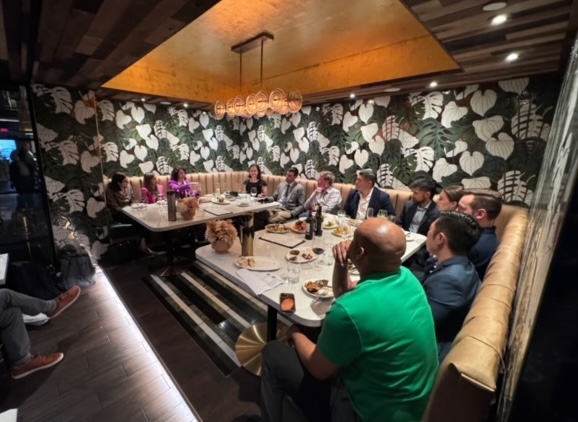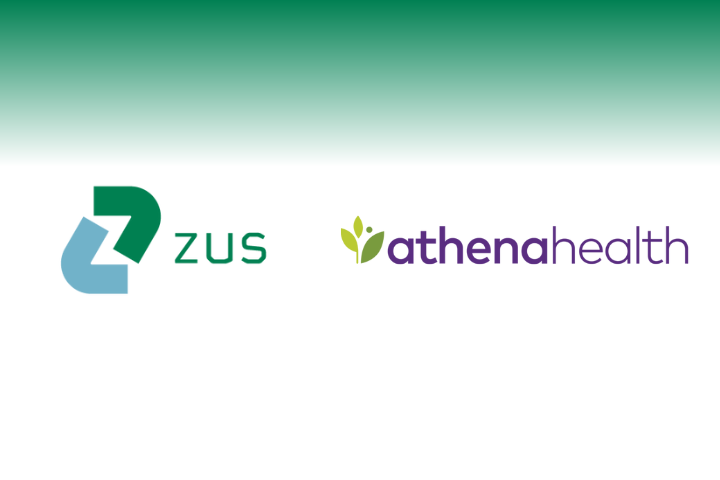Earlier this month, the Zus team gathered with fellow healthcare innovators for a dinner in Houston to discuss the future of interoperability and how we can move from the current siloed experience to a true network. We had folks join us from a diverse set of backgrounds across clinical practice, operations, product, and policy, at organizations ranging from young startups to large regional health systems. Overall, a few key themes, covered below, emerged across attendees regarding the biggest challenges faced by providers today, and what will need to be addressed in the near future in order for the healthcare industry to unlock its full potential.
Key Challenges
Frontline clinicians have low awareness and/or adoption of existing solutions.
Given the range of backgrounds present in our discussion, we had the chance to hear perspectives about both the decision-making process to purchase new solutions and how these purchases actually play out on the front lines of care. Unsurprisingly, we heard across the board that even top-down buy-in on a healthcare interoperability solution does not necessarily translate to widespread adoption. For instance, an operator at a community health system based in Houston shared that one of their executives is on the board of a local health information exchange; however, because their physicians were never sufficiently trained on the tool, it is virtually not used at all in their care delivery. This sentiment was echoed by physician leaders at large health systems, who shared that even though they know interoperability is a priority for their health system, interoperability struggles persist every day.
Providers can differentially access patient data depending on their patient’s payer and/or the treating health system.
Continuing from the challenge above, we also heard about how clinicians and operators alike have to navigate the challenge of receiving different volumes and quality of patient data based on where they were seen and who pays for their care. For instance, one physician gave the example that if he were treating a patient at Houston Methodist, he can see all of the information he would want on other care they received at Methodist; but if they had a recent workup at Memorial Hermann, he has to redo the entire process because he has no way to access that data. Not only is this wasteful and time-consuming, it is also a problem that has a solution: it just has not been successfully implemented yet.
On the population health side, another operator shared that he previously worked at a value-based care delivery company owned by a payer. In this role, he had access to comprehensive data on his patients covered by that payer, but virtually nothing for their patients with any other type of coverage. This greatly limited his team’s ability to proactively care for their patients in this second bucket.
In situations where data is available, it’s extremely tedious or even impossible to identify the signal in the noise.
Some organizations have been able to overcome the hurdles mentioned above about getting data into the hands of clinicians. However, as one of the physician attendees aptly put it, this presents a whole new set of challenges: “There’s missing data AND too much data – how do you find signal in too much noise?”
With great data, comes great responsibility – to wade through endless pages of PDFs, scrolling and scrolling for the one piece of information you need. Furthermore, what happens when some of this data is in conflict; which data supersedes the other? And who decides this? Unlike with the primary challenges listed above, there is no established solution for these types of needs – this is the current frontier of healthcare data interoperability solutions, and something in which we have invested heavily at Zus Health.
Concluding Thoughts
Ultimately, none of these challenges surfaced were new to any member of the discussion, but they did help put structure to the typical journey that healthcare organizations experience on their pursuit of data interoperability (essentially, “Why do I have to try this?” to “Why do I only have information on a third of my patients?” to “Help I’m drowning in irrelevant data!”).
However, we also discussed at dinner why there is so much reason to hope for the future. Ten years ago, these conversations were not happening at this level of actionability, across such a range of stakeholders all informed of and invested in implementing better solutions. The policy is now (mostly) there, the will and public awareness is (mostly) there, and the technology is getting there. Furthermore, the payment model that stands to benefit the most financially from better healthcare interoperability is also on the rise: namely, value-based care. As one attendee put it, “Moving 1700 patients from fee-for-service to value-based care is currently a decades-long process, but at least it’s getting started.”
At Zus, we are excited about all of these trends, and have made significant headway specifically in solving the “drowning in data” problem. Across our customers, we often see as many as 11 medication resources received from our data sources summarized into 1 medication with history; up to 22 conditions listed in a patient history document condensed into 1 condition with history; and often up to 5 inbound ADT messages translated into 1 cohesive episode of care. There’s more work to be done, but we like to think that our customers are no longer drowning in the Pacific Ocean but rather a small local pond.
This brings up another exciting aspect of the dinner – it was particularly special to see a local view of interoperability, with policy leaders, HIE operators, tech startups, and hospital systems all sitting around one table and working in the same market. While there is a push at the national level through the Office of the National Coordinator for Health IT, much of the work is happening locally, which makes perfect sense: clinicians tend to know the other major specialty and primary care players in their market, the EMRs in use by each system, and the expected quality of the medical record they receive from these organizations. As a result, these clinicians are the people best equipped to identify the key problems and define the ideal solutions, and this spirit was very much on display during our discussion. Events like our dinner in Houston reinforce our commitment to moving the industry forward, and we can’t wait for what’s to come.
If you think Zus can help your organization, please reach out to us here.




